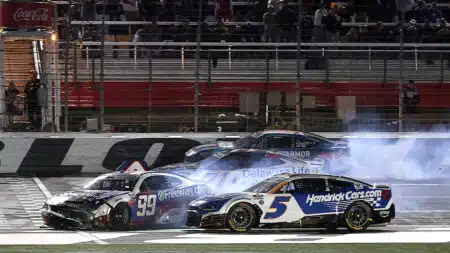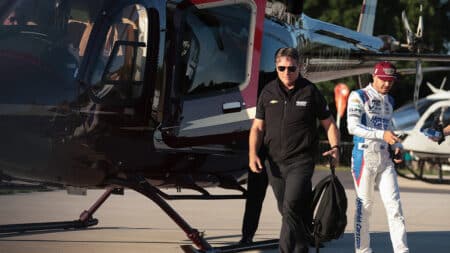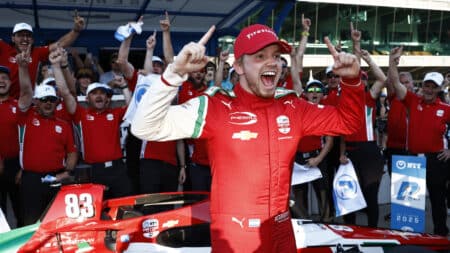
'Double isn't worth it', says Larson after 2025 attempt ends in disaster
Two crashes left Kyle Larson's hopes of completing the Indy 500 and Coca Cola 600 double in tatters — but did he even stand a chance in the first place?
The IndyCar Series has confirmed that it is delaying the introduction of its much-discussed aero kits for the new Dallara Indycar until 2013. The organisation made the decision after team owners told IndyCar CEO Randy Bernard that they couldn’t afford to develop their own aero kits.

Indy 500 winner Dan Wheldon and Bryan Herta Motorsports began testing the 2012 Dallara Indycar a couple of weeks ago. Fifteen days of testing are scheduled through to the end of the September, but the new car will make its debut as a spec car with everyone running the same aerodynamic configuration.
“No one is more disappointed than I am that we’re not going to do [the aero kits],” said Bernard (below). “But we need to look at the long-term future of the sport and it’s important that we listen to the team owners on this one. We don’t want to see our car counts go from 26 and 27 down to 16 because of an aero kit. The manufacturers and team owners have told us it’s very expensive.”

IndyCar hopes that the addition of two new engine suppliers – Ilmor/Chevrolet and Judd/Lotus – to compete against Honda as well as the improved performance of the new car will attract much-needed fan and media interest in the flagging series.
“The simulations we’ve seen on road and street courses are that lap times will be three seconds quicker, up to 15mph faster,” said Bernard. “I think [the new car and engines] are all great stories that we need to get out, that this car is going to be fast and that the aero kit is going to be a great addition. But we don’t want to [introduce the aero kit] until it’s right. It will happen in 2013, I promise.”
Bernard expects that the new car will break Arie Luyendyk’s long-standing track record of 236.986mph set at Indianapolis in 1996. “We’ve made no secrets that speed is going to be important in this car,” he said. “We want to see it break the record at some point. Fans love to see track records. They want to see something that has never been done before. We’re about relevance, innovation and speed – three of our biggest brand attributes. It’s important for us to go back to that.”
Will Phillips, IndyCar’s vice-president of technology, said initial testing of the Dallara had gone well. “We proved that some of the base functions of the car – oil and water systems, clutch, interface with the gearbox, the brakes and all of that – went really well. It was a shakedown – we didn’t try to set a lap time. We only ran one set of tyres, for example. It was [about] proving the systems work.”

Phillips is convinced that the new Dallara will be considerably safer than the current car. “The incident that poor Justin [Wilson] had at Mid-Ohio [when he broke a bone in his back] we would not expect to happen with the new car. We can’t guarantee it, but the fact that [the driver] will be sitting on safety foam and have three inches of foam behind his back should prevent that sort of injury. The Xylon panels that are on either side of the car are more extensive. All those features should make the car safer.”
Thus begins IndyCar’s slow but steady attempt to recreate itself.

Two crashes left Kyle Larson's hopes of completing the Indy 500 and Coca Cola 600 double in tatters — but did he even stand a chance in the first place?

The crunch point of Kyle Larson's Indy 500 and Coca Cola 600 double bid will come as he races from Indianapolis to Charlotte in a complex procedure involving cars, helicopters and planes. Ryan Glenn will be co-ordinating it... by text message

Kyle Larson will once again attempt the double this weekend. He explains his plans to complete the Indy 500 and NASCAR's Coca-Cola 600 in one day and overcome the "PTSD" of last year's bid

Robert Shwartzman and Prema stunned the field by claiming pole position for the 2025 Indianapolis 500 in his first-ever oval race. Here's a look at how they pulled it off